Elephant Ears (or Taro) are plants naturally found in the tropics grown for their edible corms. They are also grown as ornamental plants indoors. In Africa, Asia, Oceania, etc. the corm (which is mistaken for bulbs and tubers) of Elephant Ear plants are used to prepare various cuisines. In Nigeria, it is called Coco Yam. The name “Elephant Ear” is mostly used for the plant when it is serving as an ornamental plant. Read on to learn the various requirements for Elephant Ear plant cultivation and several ways to care for these plants indoors.
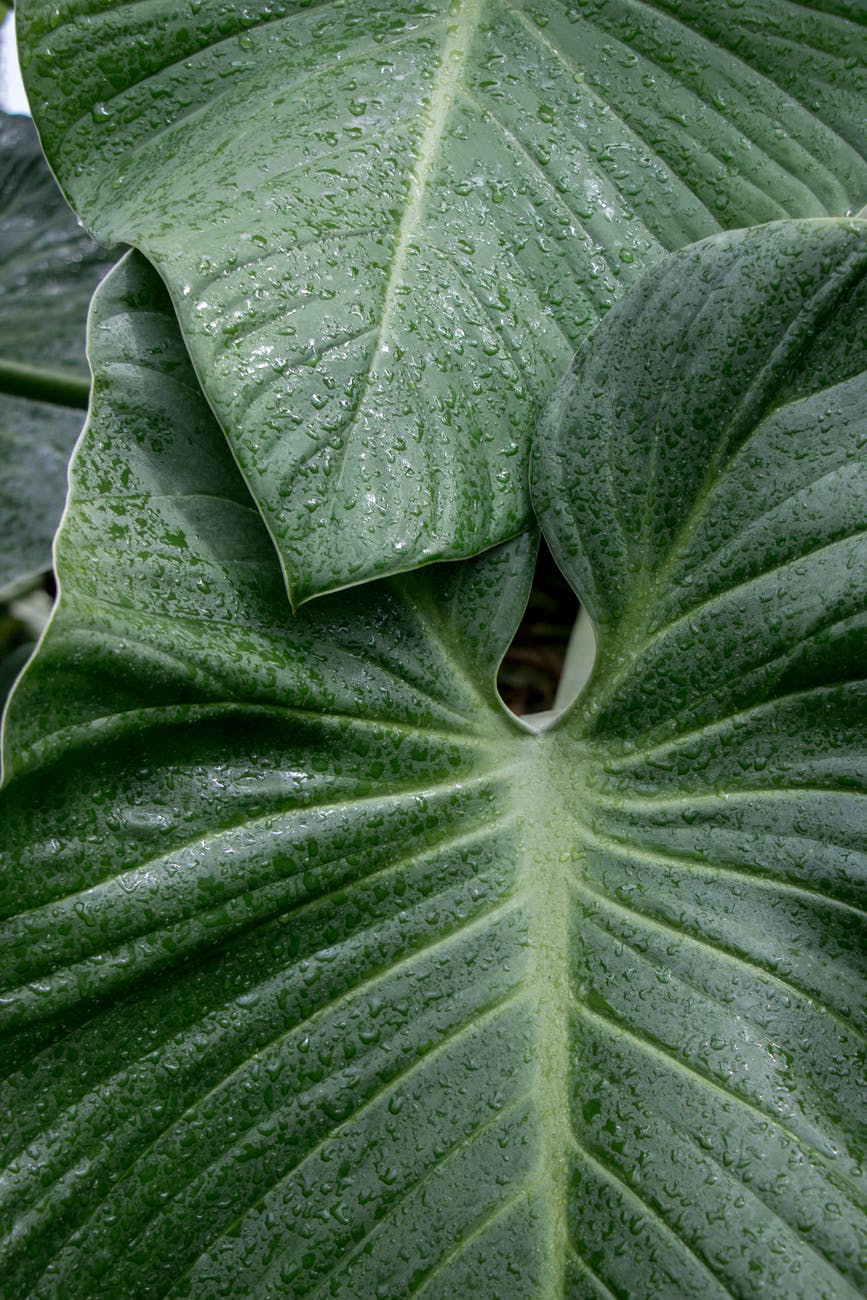
Uses for Elephant Ear Plants
Decorate Your Home With These Ornamental Plants
Their broad, colorful, heart-shapedCordate; Describes leaves and other structures that resemble hearts. leaves give them aesthetic value. When you decorate the surface of your pot with colorful stones and pebbles, your plant will doubleDouble flowers are flowers that contain more than the usual number of structures in their envelope. For example, a flower having more petals. as beautiful decor for your home or office space.
Plants Purify Your Air Naturally
A huge benefit of indoor plants is their ability to convert Carbon dioxide (CO2) to Oxygen (O2) in your home. Elephant Ears are more advantageous because they have broader leaves (therefore, they have more stomata or pores for gas exchange), and they store excess nutrients in their corms, so carbon consumption is never too much for the plants.
Add to Your Favorite Recipe and Enjoy
The cormThe bulb or tuber-like root of certain plants such as Elephant ears. Like bulbs, corms are round and have bases but do not have layers. Corms have the appearance of tubers but have multiple heads for new plant growth. of this plant is a staple food in many African and Asian countries. You cannot eat the plant raw since it contains toxins. Cook the plant to remove these toxins. The corm is rich in carbohydrates, fibers, fat, proteins, vitamins (C, D, E), and minerals such as calcium, iron, and phosphorus. Taro leaves are nutritious as well and are used in some soups in African and Asian countries.
General Elephant Ear Plant Care Requirements
All plants are unique when it comes to what they need to grow. Some prefer full sunFull sun refers to six (or more) hours of sunlight. Some plants require full sun to grow and produce fruits. Examples of plants that require full sun are tomatoes, potatoes, carrots, etc.. Others prefer partial sun. To successfully cultivate a plant indoors, you need to mimic their outdoor requirements. Read on to learn more about how to care for your plant.
Soil and Water Requirements
Elephant ears require consistently moist soil, which means that they will grow better in a well-drained soil that is watered regularly. Elephant Ears require organically-rich soil and a lot of nutrients, so you should use fertilizers or compostAn organic matter made from decomposed plant materials. Compost is often made from decomposing shredded leaves, hay, fruits, and other plant materials at a ratio of 25 part dry brown materials to 1 part fresh green materials..
Sunlight For Optimal Plant Growth
Different species of Elephant Ears require different amounts of daily sunlight. For instance, those with dark green leaves need full sunlight, while others can grow in filtered light or shade. If you are growing Elephant Ears for their corm, you should plant them in a place where they can receive six hours (or more) of daily sunlight.
Temperature and Climate
Since Elephant Ears are tropical plants, they do well in a warm climate. During winter, you can leave the corm in the ground, for they will sproutA sprout is any newly germinated seedling that has emerged from the seed coat and the medium (e.g. soil). When plants sprout, they are still attached to the seed and have their first set of leaves. again in spring. In temperate regions, Elephant Ears should be planted in spring. A benefit of indoor planting is that your plant will survive indoors during winter. You can start growing your plant indoors a few weeks before the start of spring.
Proper Plant Spacing and Pot Depth
Elephant Ears have corms, rhizomes, and broad heart-shaped leaves. Plants with corms and rhizomes generally require more space. When planting, space them about 2-4 feet apart so that their rhizomes can stretch further, and the leaves of a plant will not cover those of another.
When planting your Elephant Ears, dig a deep hole so that the top of the corm is at least 4 inches below the ground. The deeper the corm, the better the growth and yield of your plants since the surface of soils is not as moist as the plant requires. Do not dig too deep.
Now that you know the needs of Taros, you can mimic their environmental requirements indoors.
Steps to Cultivating Elephant Ear Plants Indoors
There are different reasons to cultivate Elephant Ear plants indoors. Some reasons include starting them indoors during the winter and then replanting outdoors in the spring to get faster yield, growing them indoors for their aesthetic value, and growing them in a controlled environmentThe factors influencing an organism (both internal and external). The surrounding of an organism. for research. Here are a few tips for growing your plant indoors.
1) Provide a Large pot
Elephant Ear plants, as well as crops like yams, potatoes, tulips, etc., are geophytes. Geophytes are plants with tubers, corms, bulbs, or rhizomes. Such plants require large containers that can accommodate their corms. Your container should be a foot wide, at least.
2) Prepare a Well-Drained Soil
Another thing with plants that have tubers, corms, bulbs, and rhizomes, is that they are more susceptible to diseases and rot when they are grown in saturated soil. To cultivate a healthy plant, you need to strike a balance between the water requirement of the plant and the soil requirement.
3) Cover the Surface of the Soil
We advise that you spread rocks on the surface of the pot of your Elephant Ears. Spreading rocks on the surface of the container is not just for their aesthetic value but also reduces the amount of water that gets lost through evaporation. Elephant Ears do not grow well in dry soil. Remember to water the plants regularly.
4) Place Your Pot Close to a Window
With access to sunlight indoors, your plants will have light and warm temperatures. Elephant Ears require high temperatures to grow. To get the best sunlight for your plant, place the pot close to a window facing west or south.
More Ways to Care for Indoor Elephant Ear Plants
Due to the nature of their broad leaves, water, soil, and temperature requirements, as well as other distinctNot united; not similar. Not connected to or resembling parts in the same series. features of Elephant Ears, you can never be too careful when caring for the plants. Here are more useful tips for your plants.
Regularly Clean Plant Leaves
Elephant Ear leaves are broad, so they can easily collect dust and dirt indoors. This dirt can block the plant’s stomata (openings in the leaves that serve as a channel for gaseous exchange). Wipe the leaves with a damp towel regularly so that the plants can respire and photosynthesize with ease. Don’t worry about the water because it won’t remain on the leaves. According to recent studies, Elephant Ears contain honeycomb-like microstructures on their leaves. These microstructures make the leaves of Elephant Ears hydrophobic.

Apply Fertilizer or Compost
Fertilize the soil of your Elephant Ear plant regularly. Use a general indoor plant fertilizerAny material added into the soil (or sprayed on leaves) to give more nutrients to plants. Fertilizers often give Nitrogen, Phosphorus, and Potassium (NPK) to plants. Fertilizers can be organic or inorganic. (half strength) once per month. If you want to save money, you can use compost. When mixing the soil with compost, remember that the plants need well-drained soil.
Conclusion
Elephant Ears or Taro are tropical crops grown for their edible corms, leaves, and their aesthetic value. Cook the corms before serving as food due to their toxic nature when raw. They prefer warm temperatures, well-drained soil, and regular watering.
Elephant Ears should be fertilized once a month with half-strength general indoor fertilizers. Their leaves should be wiped with a damp towel regularly to clear their stomata. They require full or partial sun. Taro plants with dark green leaves need full sun, while others with lesser green or other colors can do well in partial shade.
Elephant Ears are a favorite plant for many people. What about you? What do you love about them? Please share your thoughts and ideas in the comment section.



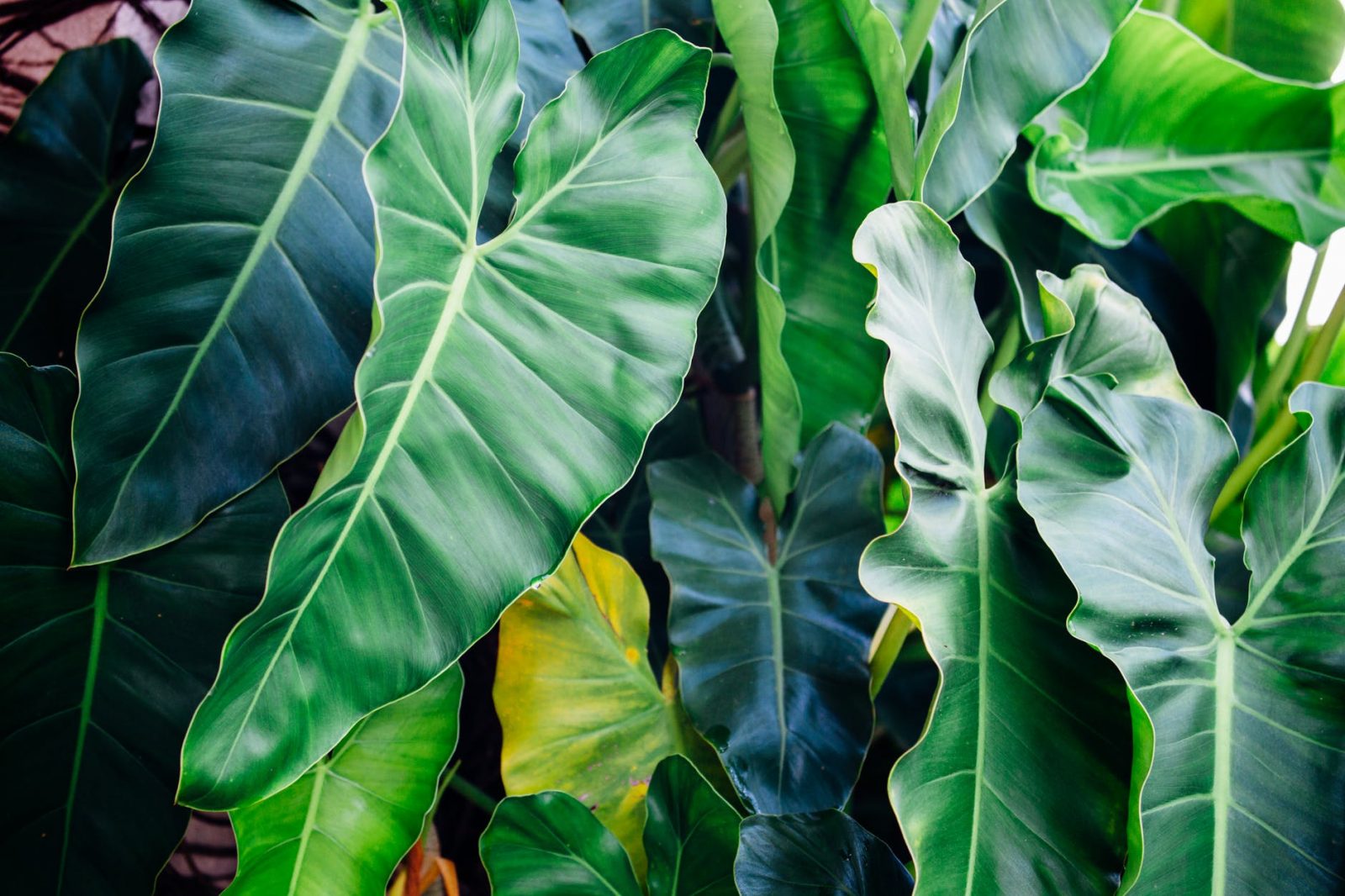
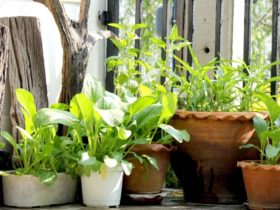


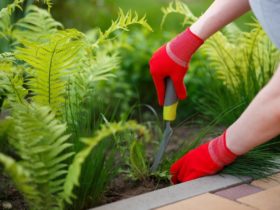

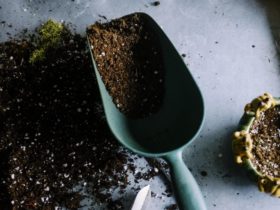

Leave a Reply